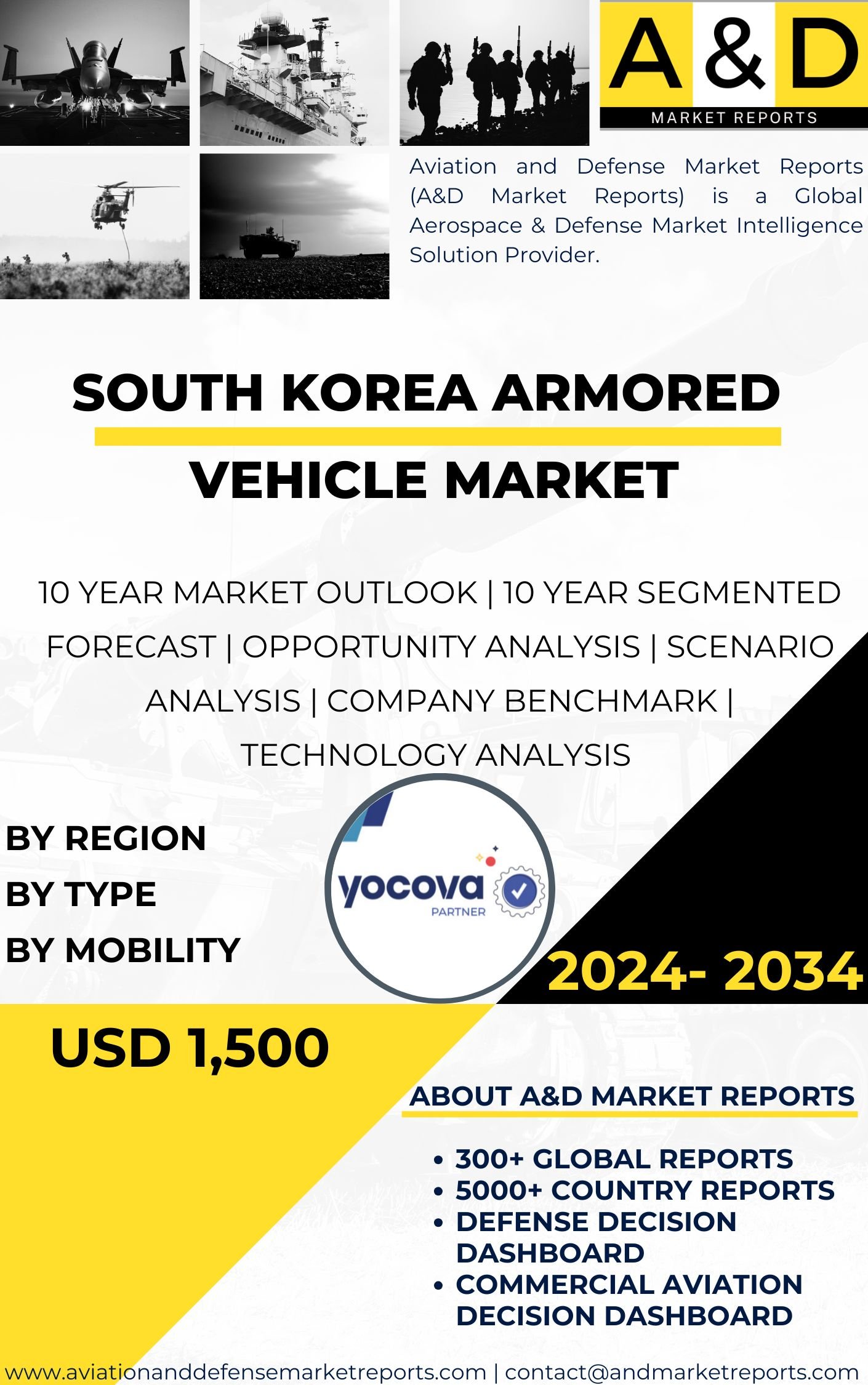Description
South Korea Armored Vehicle Market
The South Korea armored vehicle market is a critical segment within the nation’s defense industry, providing essential capabilities for modern warfare and security operations. Armored vehicles are robust and heavily protected military assets used for various purposes, such as troop transport, reconnaissance, combat support, and counter-insurgency operations. This article provides an in-depth analysis of the current state, growth drivers, challenges, key players, and future prospects of the South Korea armored vehicle market.
The historical context of the South Korea armored vehicle market can be traced back to the nation’s post-war era, during which it faced significant security threats. The Korean War in the early 1950s highlighted the need for a robust defense sector, including the production of indigenous armored vehicles. Since then, South Korea has made remarkable strides in developing its armored vehicle manufacturing capabilities, transitioning from being heavily reliant on imports to achieving self-sufficiency.
In the current landscape, the South Korea armored vehicle market comprises a mix of domestically produced vehicles and acquisitions from foreign suppliers. South Korean defense companies and manufacturers have made significant progress in developing advanced armored vehicle technologies, reducing reliance on foreign imports, and promoting self-sufficiency.
One of the primary growth drivers for the South Korea armored vehicle market is the country’s focus on modernizing its military forces. As geopolitical complexities persist in the region, there is a growing emphasis on enhancing defense capabilities, including armored vehicles, to ensure the country’s readiness and preparedness to address potential security challenges.
Moreover, South Korea’s strategic location with its mountainous terrain and potential urban warfare scenarios underscores the importance of robust armored vehicle capabilities. The ability to rapidly transport troops and equipment in various terrains is essential for maintaining military readiness and effectively responding to potential threats.
Furthermore, the South Korea armored vehicle market benefits from the nation’s focus on indigenization and developing homegrown defense technologies. The government’s commitment to fostering domestic defense capabilities has led to increased investments in research and development, driving innovation in armored vehicle technology.
Additionally, strategic collaborations with international defense suppliers have been instrumental in accessing advanced armored vehicle technologies and expertise. Partnering with established global companies allows for technology transfer and enables South Korea to leverage best practices in armored vehicle development.
The South Korea armored vehicle market also derives growth from exports to international markets. South Korean companies have gained recognition for producing reliable and high-quality defense equipment, attracting demand from various countries worldwide.
However, the market also faces several challenges. One of the primary challenges is the constant need for innovation and technological advancement. As military tactics and warfare evolve, developing armored vehicles with enhanced mobility, protection, and versatility requires continuous research and development efforts.
Moreover, competing in the global armored vehicle market can be challenging due to the presence of established international suppliers. To maintain competitiveness, South Korean manufacturers must focus on specialization and niche applications, providing unique solutions tailored to specific customer needs.
Additionally, adherence to strict international regulations on arms exports can impact the market’s global reach. Exporting advanced military-grade vehicles to certain regions may be subject to scrutiny and restrictions, limiting market access.
To address these challenges and ensure sustained growth, South Korea’s defense industry must prioritize research and development. Investing in advanced engineering capabilities will enable the country to develop cutting-edge armored vehicles, maintaining a competitive edge in the global market.
Furthermore, fostering strategic collaborations with international partners can enhance technological capabilities and provide access to broader markets for South Korean armored vehicles. Collaborating with allied nations fosters knowledge exchange and strengthens mutual defense capabilities.
The South Korean government’s continued support for the defense industry is crucial for promoting growth in the armored vehicle market. Financial backing for research and development initiatives, as well as procurement programs, will drive innovation and ensure the development of state-of-the-art armored vehicles.
Moreover, promoting a skilled workforce and providing training and education in armored vehicle technology will enhance the local talent pool and create a sustainable ecosystem for the South Korea market.
In conclusion, the South Korea armored vehicle market is a significant segment within the nation’s defense industry, providing essential capabilities for troop transport, reconnaissance, and combat support. Driven by the country’s focus on modernizing its military forces, indigenizing defense technologies, and expanding export opportunities, the market continues to grow steadily. However, challenges related to innovation, global competition, and export regulations require proactive measures from the government and the defense industry to ensure sustained growth and competitiveness in the global market. By investing in research and development, fostering strategic collaborations, and promoting a skilled workforce, South Korea can strengthen its position as a key player in the global armored vehicle market and enhance its overall defense capabilities.




